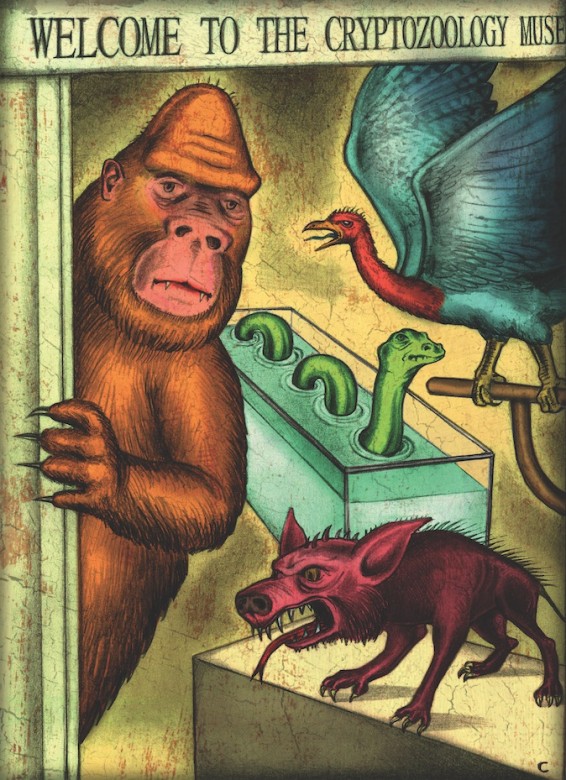International Cryptozoology Museum in Portland, Maine | Only in New England
A visit to the International Cryptozoology Museum in Portland, Maine, just may change the way you view the world.

The International Cryptozoology Museum in Portland, Maine, just may change the way you view the world.
Photo Credit : Craig Larotonda/Revelation StudiosThere’s nothing more persuasive than a skeptical believer. Of course, Loren Coleman, founder of the International Cryptozoology Museum in Portland, Maine, would never describe himself as such. “You can’t quote me as saying I believe any of this,” he says, explaining that belief leads people to be inflexible in the face of new evidence. “I don’t try to be a persuader,” he adds. “I’m just trying to share my passion and insight because I think a lot of people have never opened their minds to the possibility.”
Coleman’s museum is a cramped space situated in the back room of The Green Hand Bookshop on Congress Street. The shelves lining the walls are crammed with an odd mix of evidence and memorabilia. In one corner you’ll find a picture of a sea serpent; in another, a cast of an oversize foot. A model coelacanth (a fish once thought extinct, rediscovered in 1938) is mounted proudly on the wall like a prize bass. A life-size replica of Bigfoot guards the front door, while a 15-foot-long pterodactyl hangs from the ceiling, looming over the whole affair.

Photo Credit : Craig Larotonda/Revelation Studios
Coleman is both the museum’s tour guide and its main attraction. The exhibits serve as props as he entertains visitors with tales of his 42-year career studying cryptids (animals as yet undiscovered by science). He’s the foremost expert in his field; he’s written 17 books and more than 300 articles and is featured in almost every documentary produced about skunk apes, sasquatches, sea serpents, and the like. If you’ve watched The History Channel in the last 10 years, you’ve likely seen his face.
But if you’re looking for a sideshow barker, you’ll be sorely disappointed. Coleman is of a scientific mind–far more Agent Scully than Mulder–and years of investigating sightings have taught him to be skeptical. “Eighty percent of my cases are misidentifications: a dead dog that was supposed to be some kind of monster, or a black panther that turns out to be a tomcat that was hit by a car,” he says. One percent are hoaxes, and the rest warrant further study: “It could turn out to be a moose. It could turn out to be an alligator in a pond. Or it could turn out to be a new species that human beings have called a monster or a creature or something else.”
Loren Coleman points out that new species come to light all the time, and not only among the insects. In just the last year, for instance, scientists have discovered a new six-and-a-half-foot monitor lizard in the Philippines and a species of giant crayfish in Tennessee. Even the beloved giant panda was once considered a myth, not fully accepted by Western science until the early 20th century. So why not Bigfoot?
Though small and unorthodox, the Cryptozoology Museum will do more to test your preconceived notions than almost any other museum in New England. After 45 minutes talking to Coleman, you may leave just as convinced that “monsters” couldn’t exist–but for the first time in your life, you’ll be challenged to back up that opinion.
International Cryptozoology Museum, 661 Congress St., Portland, ME 207-518-9496; crytozoologymuseum.comJustin Shatwell
Justin Shatwell is a longtime contributor to Yankee Magazine whose work explores the unique history, culture, and art that sets New England apart from the rest of the world. His article, The Memory Keeper (March/April 2011 issue), was named a finalist for profile of the year by the City and Regional Magazine Association.
More by Justin Shatwell

